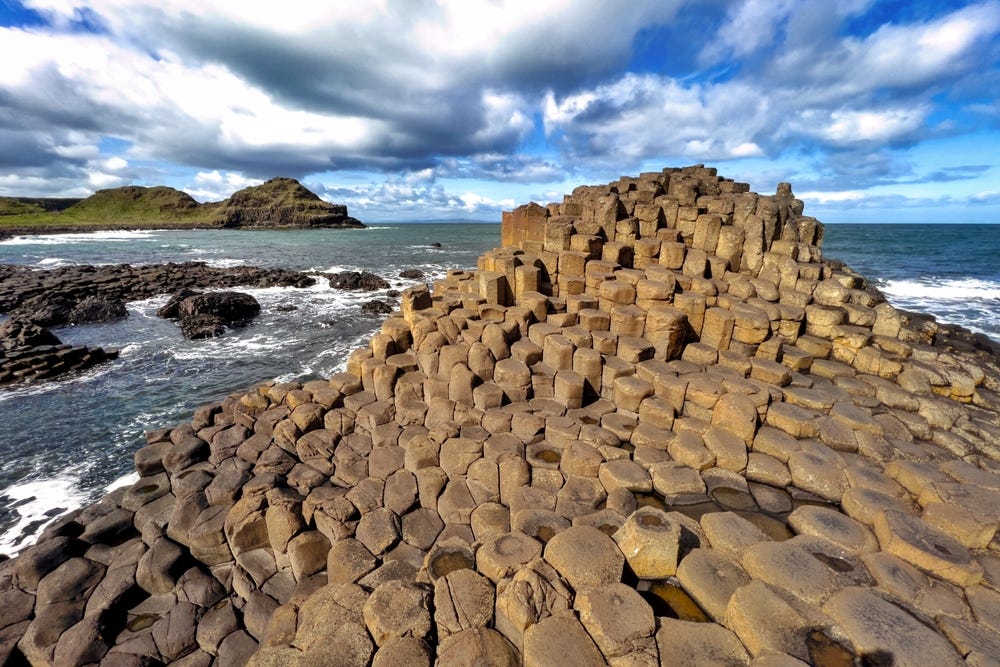According to the tale, Finn McCool, also known as Fionn mac Cumhaill, was a giant and a warrior of great renown. He lived along the northern coast of Ireland. Across the sea, in Scotland, resided another giant named Benandonner. The two giants were sworn enemies and Finn, eager to confront Benandonner, decided to build a causeway across the sea so they could meet and settle their differences.
Using his immense strength, Finn began hurling enormous stones into the sea, forming a pathway that stretched from the coast of County Antrim in Northern Ireland to the Isle of Staffa in Scotland. However, as Finn neared the end of his task, he grew tired and decided to rest. Unbeknownst to him, Benandonner was already crossing the causeway to face him.
Finn's wife, Oonagh, seeing the size and ferocity of Benandonner, realised her husband would be no match for the Scottish giant. Using her quick wit, she disguised Finn as a baby, wrapping him in a blanket and placing him in a cradle. When Benandonner arrived, Oonagh invited him in and showed him the 'baby'. Seeing the size of the child, Benandonner was struck with fear, imagining the colossal size of the father. Terrified of facing such a giant, Benandonner fled back to Scotland, tearing up the causeway behind him to prevent Finn from following.
This legend has been passed down through generations, enchanting listeners with its blend of humour, heroism, and the fantastical deeds of giants.
In contrast to this myth, the scientific explanation for the Giant's Causeway is grounded in geology. Around 50 to 60 million years ago, during the Paleogene period, intense volcanic activity occurred in the region. As lava flowed and cooled rapidly upon contact with the sea, it contracted and cracked, forming the distinctive hexagonal basalt columns that we see today.
These columns are remarkably uniform, with most having six sides, although some have four, five, seven, or eight sides. The cooling process created the characteristic pattern, which resembles a carefully constructed pathway.
The Giant's Causeway, with its 40,000 interlocking basalt columns, stands as a striking example of natural architecture, a testament to the powerful geological forces that shaped our planet. While the myth of Finn McCool provides a charming and imaginative explanation for its creation, the scientific account offers a glimpse into the Earth's dynamic history.




